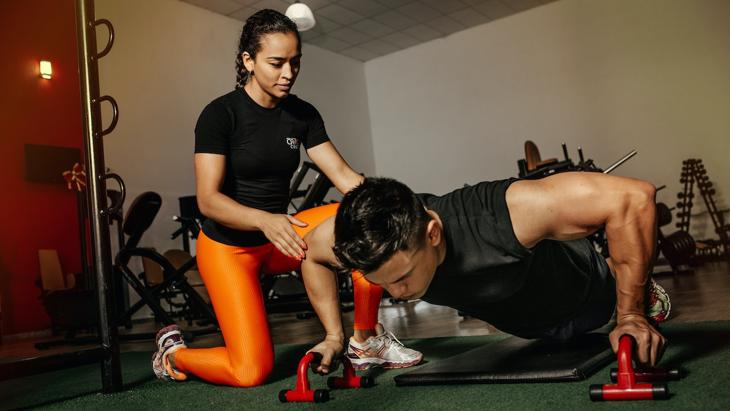Balance is an important part of health and well-being. The ability to maintain balance can reduce the risk of falls and injuries, as well as keeping you fit and able to enjoy activities like sports and dancing. Balance training can help improve your balance, prevent falls, and help you stay healthy overall.
Falls are the leading cause of injury-related deaths among older adults in the United States. Poor balance is one of the primary risk factors for falls, so improving your balance is one way to reduce your risk of falling.
Fortunately, balance training can help improve your balance and prevent falls. Balance training involves exercises that focus on coordination, strength, endurance, and flexibility that help you with dynamic activities like walking or running. This type of training can be done safely at home or in a gym setting with a qualified instructor.
Understanding Balance
Balance is defined as the ability to maintain an upright posture while standing or moving. It involves controlling movements in all directions while keeping your body stable and upright. Your body’s sense of equilibrium helps you maintain your posture when standing or moving around by automatically adjusting itself to keep you from toppling over when faced with external forces such as weight shifts due to gravity or wind gusts.
Good balance requires coordination between your eyes, inner ear (vestibular system), muscles and joints throughout the body, as well as a strong central nervous system (CNS) for efficient communication between all these systems. As we age our bodies experience changes that affect our ability to retain good balance including decreased muscle strength, flexibility and coordination which may lead to increased instability when performing certain activities such as walking on uneven terrain or carrying heavy objects up stairs.

Benefits of Balance Training
The main benefit of regular balance training is improved stability which reduces the risk of falls related injuries such as broken bones or head trauma among elderly adults but also benefits athletes who may require swift changes in direction during competitive events like football or basketball games where quick responses are essential for success on the field/court. Additionally regular practice helps strengthen core muscles which improves posture while reducing back pain often associated with poor posture from long hours working at a desk job or prolonged periods sitting down watching television/movies etc.. Improved stability also increases confidence while performing daily tasks such as getting up from a chair without assistance allowing elderly adults more freedom without worry about potential injury due to unstable movement patterns caused by weak muscles/joints etc.. Other benefits include increased cardiovascular fitness levels due to increased heart rate during workouts as well increased muscular strength/endurance from repeated movements over time making everyday activities easier for people who have difficulty performing them due to joint/muscle pain etc… Lastly enhanced proprioception (body awareness) leads to improved coordination necessary for fast reflexive movements needed during sports competition etc…

Types Of Balance Training Exercises
There are various exercises that can be done at home or in a gym setting that will improve overall stability by strengthening core muscles required for maintaining good posture throughout daily activities like walking up stairs carrying groceries etc… Examples include: single leg stands where one foot is placed on an elevated surface like a bench while holding onto something stable then slowly lifting other foot off floor while maintaining steady position; wall squats where feet are placed hip width apart against wall with arms raised above head then slowly lowering into squat position focusing on proper form; side stepping exercises involving lateral movement across room using only one leg; step ups onto platform using one foot at time; lunges into forward direction; toe raises (standing on toes then releasing); single arm shoulder press using weights; plyometric jumps onto platform then stepping down with control etc.. All these exercises should be performed gradually increasing resistance over time under supervision from qualified instructor if possible otherwise begin with light weights if doing exercises at home researching correct form beforehand via internet resources videos etc… .
Conclusion
In conclusion balancing exercise has many benefits including improved stability leading to reduced risk of falls among elderly adults due athlete’s need for quick reflexive movement during competitive events there are variety types that can be performed safely at home gym setting under supervision qualified instructor depending situation always research form beforehand ensure safety maximum benefit possible regular training leads stronger healthier lifestyle better quality life overall .

 The Power of Saving for a Charity: How to Plan and Save for Charitable Giving
The Power of Saving for a Charity: How to Plan and Save for Charitable Giving